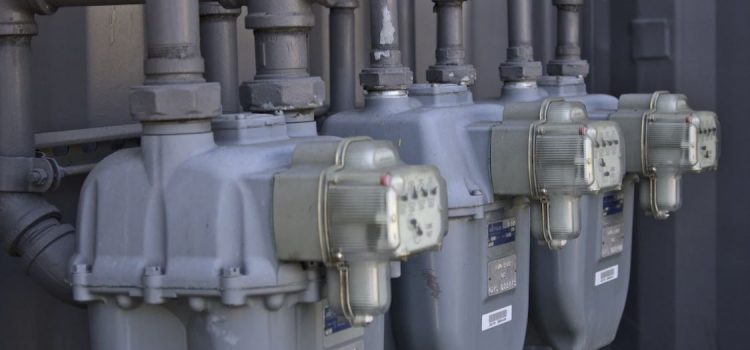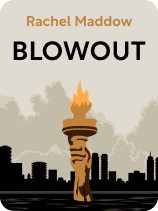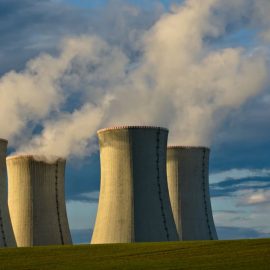

This article is an excerpt from the Shortform book guide to "Blowout" by Rachel Maddow. Shortform has the world's best summaries and analyses of books you should be reading.
Like this article? Sign up for a free trial here.
What does it mean to frack natural gas? How is it possible to drill horizontally? What are the benefits of fracking?
Fracking is a method used to extract natural gas from the earth. Rachel Maddows, the author of Blowout, discusses the process in detail and how it may lead to energy independence in certain countries.
Continue reading to learn about the history and evolution of fracking.
Slickwater and Horizontal Drilling
Fracking natural gas is the main method of mining the resource. Miners drill into natural gas pockets deep below the earth, then inject fluid into the hole at high pressure, forcing the gas to move up to the surface through cracks where it can be collected. Prior to the 1990s, this fluid was usually a gel, which was expensive to produce and often clogged the very passages the gas was meant to move through. When these gels were replaced with slickwater—a cheap mixture of water, sand, and chemicals designed to reduce friction—more gas could be collected for less expense.
(Shortform note: While the water in slickwater creates paths in the rock, the sand and chemical lubricants ease the formation of those paths and keep them open long enough for the gas to escape; otherwise gravity and pressure would force them closed. There is no exact formula for slickwater, so each company uses different ratios. Corporate espionage is a regular feature of the industry, with companies spying on each other’s wells to see what methods are being used and how successfully.)
The horizontal drilling technique developed soon after allows companies to frack more gas from a single drill site or well. Rather than simply drilling straight down, the drill reaches the required depth, then turns at a right angle and continues to drill sideways, connecting gas chambers that extend thousands of feet. Though this requires companies to use more slickwater on a single well, doing so is less expensive than drilling hundreds of wells that only produce gas for a short time.
(Shortform note: Horizontal drilling can also be used to access gas deposits that can’t be reached vertically; for example, if a reservoir is directly underneath existing buildings or residential areas. In 2013, Consol Energy was able to mine gas from the Marcellus Shale underneath the Pittsburgh International Airport only by drilling horizontally.)
The Potential for Energy Independence
Fracking natural gas underwent a boom in the early 2000s and was depicted by many energy companies as being the way of the future. The US had far greater gas reserves than oil reserves and potentially had enough gas to support up to half of the country’s energy needs for the next hundred years. Shortly following the US invasions of Afghanistan and Iraq, legislators and businessmen hoped they could sever ties with oil-producing countries in the Middle East in favor of producing their own energy. This would keep energy production cheap and allow the US military to take action without worrying about jeopardizing diplomatic relationships with Organization of the Petroleum Exporting Countries (OPEC) member nations like Saudi Arabia.
| Energy Scares and Feasible Alternatives American interest in energy independence began with the energy crises of the 1970s. Disruptions to oil production in the Middle East were caused by the 1973 embargo against the US by Arab OPEC nations in response to American support for Israel in the Yom Kippur War, as well as the collapse of Iran’s oil industry following its 1979 revolution. The embargo coincided with a decline in domestic energy production, creating a massive oil shortage and increasing prices for consumers. With the future accessibility of oil in question, many believed that clean energy was the way of the future. The newly formed Department of Energy spent much of its early years working on solar power and more energy-efficient consumer goods. However, the crises of the 1970s were followed by a “glut” of cheap oil in the 1980s, and the US remains largely dependent on foreign oil to this day. As a result, there has been a serious energy crisis or oil price “shock” nearly every decade since the 1970s. |
Maddow concedes that America benefited from producing its own natural gas, but she points out that for many countries in Europe, dependence on foreign oil has simply been replaced with dependence on foreign gas, namely gas produced by Russia. As the relationship between the European Union (EU) and Russia has grown more tense following the 2014 annexation of Crimea, gas prices have soared, just as oil prices did in the early 2000s.
(Shortform note: After Russia invaded Ukraine in February 2022, gas prices skyrocketed again, surpassing records set in 2008 following the global financial crisis. Ukraine’s allies in Europe and the US adopted sanctions against Russia that limited its ability to export oil and gas, hoping that this would sabotage the war effort since energy sales make up nearly half of Russia’s federal budget. However, while the sanctions have weakened Russia’s economy overall, Russia was able to find new buyers in India and China. At the same time, Europe and the US struggled to meet their consumers’ energy needs by buying oil from other nations—mainly Saudi Arabia and Qatar—and releasing millions of barrels from national stockpiles.)

———End of Preview———
Like what you just read? Read the rest of the world's best book summary and analysis of Rachel Maddow's "Blowout" at Shortform.
Here's what you'll find in our full Blowout summary:
- A deep dive into the corruption and exploitation in the oil and gas industry
- Examples of how the discovery of oil can weaken a country
- Possible ways to protect the world from the energy industry






